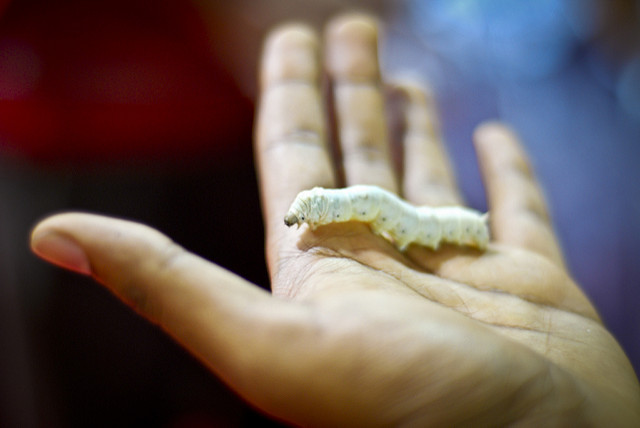Small-scale farmers turn to sericulture farming to adapt to climate change

Introduction
As climate change continues to take toll on small-scale farmers across the country, the push by farmers to switch to new alternative farming methods that are more resilient to weather uncertainties is increasingly gaining pace.
While smallholder farmers contribute about 80 percent towards Kenya’s food basket, climate induced losses have battered their source of livelihoods leaving majority languishing in abject poverty.
But in Ruiru constituency, Kiambu County, some 30 kilometers from the capital of Nairobi, a group of small-scale farmers are turning to sericulture farming (silkworm rearing) to cushion themselves from the devastating vagaries of climate change.
While majority of crop small scale farmers in the country are turning to technology and use of hybrid seed varieties to beat weather uncertainties and increase yield, Joe Mwangi, a 35 year -old farmer is adapting to sericulture farming to adapt to climate change.
Making the switch to silkworm rearing
Mwangi is among hundreds of smallholder farmers in Kiambu County who have opted for silkworm farming to supplement household income which has been impacted by years of un reliable rainfall.
“Since I abandoned maize farming two years ago due to unreliable rainfall and ventured to silkworm rearing I have been able to fend for my family and afford school fees for my two sons,” says Mwangi who learned about sericulture farming through trainings conducted by the International Centre for Insects Physiology and Entomology (ICIPE).
Unlike other farming methods where the harvest period can take more than three months, Mwangi says silkworm rearing is ideal for farmers who wish to get income at a very short period.
“The returns are immediate because the whole process takes a month to harvest thus giving farmers’ real-time money within a very short period and it’s not capital intensive like other farming which requires a lot of farm inputs,” explains Mwangi.
He however notes that though silkworm farming ranks with honey-bee as one of the world’s most profitable domestic insects, getting enough mulberry leaves to feed the worms could be a daunting task if not well planned.
“These worms can really eat and one needs to have enough food to feed them to attain high quality and quantity cocoons. Initially I used to borrow mulberry leaves from my neigbours but I have since planted my own mulberry trees in my two acre plot which are more than enough to feed 40,000 silkworms a month,” said Mwangi.
Lessons Learnt
With 40,000 silkworms, Mwangi says he can harvest 60 Kilogrammes of cocoons that fetch him around $ 400 a month. A kilogramme of cocoons goes for around $ 6 to $7 depending on the market demand.
“I prefer silk farming since there is ready market and no intermediaries involved like in crop farming,” said Mwangi, adding that ICIPE provides them with ready market.
Mwangi is one of the beneficiaries of an initiative launched by the government and agricultural research institutions that are introducing sericulture farming to small scale farmers. Industry experts say that though the industry is in its nascent stages, the quick uptake of sericulture farming by small-scale farmers as an alternative source of farming has the potential of alleviating poverty especially in the wake of unpredictable weather patterns.
Sericulture farming was introduced in the country in 1970s but its uptake by farmers has been slow. According to experts based at the National Sericulture Station and International Centre for Insects physiology and Entomology (ICIPE) they attribute the slow development of sericulture farming to lack of a developed value chain, lack of market linkages and very limited domestic consumption.
“If we can build capacity and develop the value chain for silkworm farming, most small scale farmers would embrace it as an alternative source of livelihood,” says Regina Macharia, a sericulture expert based at the International Centre for Insect Physiology and Entomology (ICIPE).
Macharia says with increasing weather uncertainties farmers would have to look at new farming alternatives such as sericulture to adapt to climate change.
To assist farmers better understand silkworm farming, Macharia says ICIPE provides farmers with certified eggs which guarantees high quality cocoons.
“Since the process of hatching silkworm eggs from moths is a difficult process that requires observance of some temperatures and hygiene conditions, ICIPE does the hatching and sells the eggs to farmers,” says Macharia.
Globally, over 30 countries produce silk, 16 of which are in the Asian continent, accounting for about 90 percent of the total world silk production. India is the second largest producer of raw silk after China and is also the biggest consumer of silk.
(0) Comments
There is no content